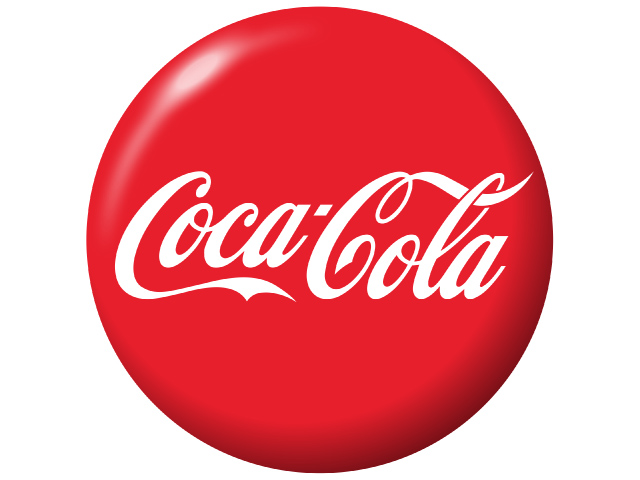The company's key figures
The group's turnover is $47.5 billion in 2024, an increase of about 6% compared to the previous year.
This is North America with 34% of the market share. In Europe, Africa and the Middle East, there is a 24% market share. In Latin America 12%, on the continent, Asia Pacific, 18%.
Coca-Cola now has more than 200 different brands that are divided into several categories. Water, soft drinks at the main market, but also tea, coffees and energy drinks.
Finally, in 2023, the group employed about 80,2000 employees worldwide, all sectors combined.
Group SWOT analysis
Strengths
Coca-Cola's main strength today remains its notoriety, since it is one of the main brands present in the world in all distribution networks. For several years, the logo of the measurement brand has almost changed, which gives it a reputation universally recognized in more than 200 countries.
As we said above, the brand also has more than 200 brands, several of which will exceed a billion dollars in turnover. It should also be noted that the brand is present in several types of segments and this diversification allows it to increase at least to improve its competitiveness compared to other competitors. Worldwide, Coca-Cola is present in about 200 countries and its distribution network is very high. Products are indeed found in large retailers, but also in restaurants in machines and on the net.
Weaknesses
Coca-Cola, despite its obvious strengths, focuses on a market that is considered unhealthy for consumers, that is, in a sugary beverage market. Gradually, these drinks are criticized by consumers and highlighted by the government in order to fight obesity and diabetes-like diseases, etc. in addition, and this is so much so that they are taking up more and more space today. The group was ranked among the world's largest polluters in 2023, which remains quite recent. This is a major weakness, especially since the vast majority of consumers are increasingly concerned about environmental issues.
In addition, the Coca-Cola group has had some legal problems, which has contributed to a negative impact on its notoriety in the long term. The group has been developing in emerging countries for several years now as the market is gradually coming to saturation. Despite a leading position, the fact remains that new players regularly enter the market and offer healthier alternatives to the sugary drinks offered by Coca-Cola.
Among the main weaknesses, it should also be noted that Coca-Cola offers few healthy alternatives to its sweet products. Indeed, the group has a lot of trouble positioning itself on organic for example, which may harm it in the coming years.
Opportunities
Even if Coca-Cola is still having difficulty positioning itself on healthier products, the fact remains that little by little, the group manages to highlight in its shelves drinks such as tea or various juices that have a better reputation in the eyes of consumers. Sugar-free sodas, for example, have seen a sharp increase in sales for several years, which contributes to improving the company's brand image and, above all, allowing it to maintain its leading position.
Indeed, despite the appearance of other brands on the market, it is very difficult for them to position themselves in the same rank as a group such as Coca Cola, which has existed for years and years and is present and recognized worldwide.
It should also be noted that the group, as we said above, is positioned on so-called "emerging" countries in order to ensure stable growth and an opportunity for diversification in a market that is gradually tending to become saturated in some countries.
Opportunities also include the rise of digital technology and increasingly personalized marketing. The group has invested a lot in research and development, in e-commerce, but also in mobile applications, allowing consumers to follow them everywhere. In 2025, Coca Cola has millions of fans on all social networks, allowing it to further assert its leadership in the world. The group also regularly uses artificial intelligence to target consumers and best adapt its strategy.
Gradually, the group is developing innovations in favor of sustainable development, with healthier packaging, and the gradually implementation of a more circular economy.
Threats
Among the main threats is the desire of consumers to have healthier alternatives in their consumption habits. To this end, the new players who gradually arrive on the market will be able to gradually gain ground, even if it will be very complex to dethrone the American giant. In addition, consumers are gradually favoring more local and artisanal brands instead of this type of giants.
It should also be noted that Coca Cola is experiencing increasingly fierce competition, the main ones being PepsiCo, Nestlé, or RedBull, not to mention local players, who mark ground by being close to consumers, and by offering products that know how to meet the demands of the moment.
Another threatened comes from the regulations, which are always stricter. There are indeed more and more taxes, and lobbies working against companies like Coca Cola around the world.
Finally, raw materials are experiencing a significant increase in prices, such as sugar for example. Finally, geopolitical tensions affect the group's logistics.
Conclusion
The Coca Cola group is still among the largest of its generation, with a loyal set of consumers and an increased presence on social networks. Its partnerships with sports clubs, with social and cultural events give it a notoriety that has not diminished over the past fifty years.
However, it is true that the group must also face new challenges, with changes in consumer habits, but also with the new environmental issues that force the group to develop new practices in terms of distribution and design of the products offered.
https://investors.coca-colacompany.com/about









